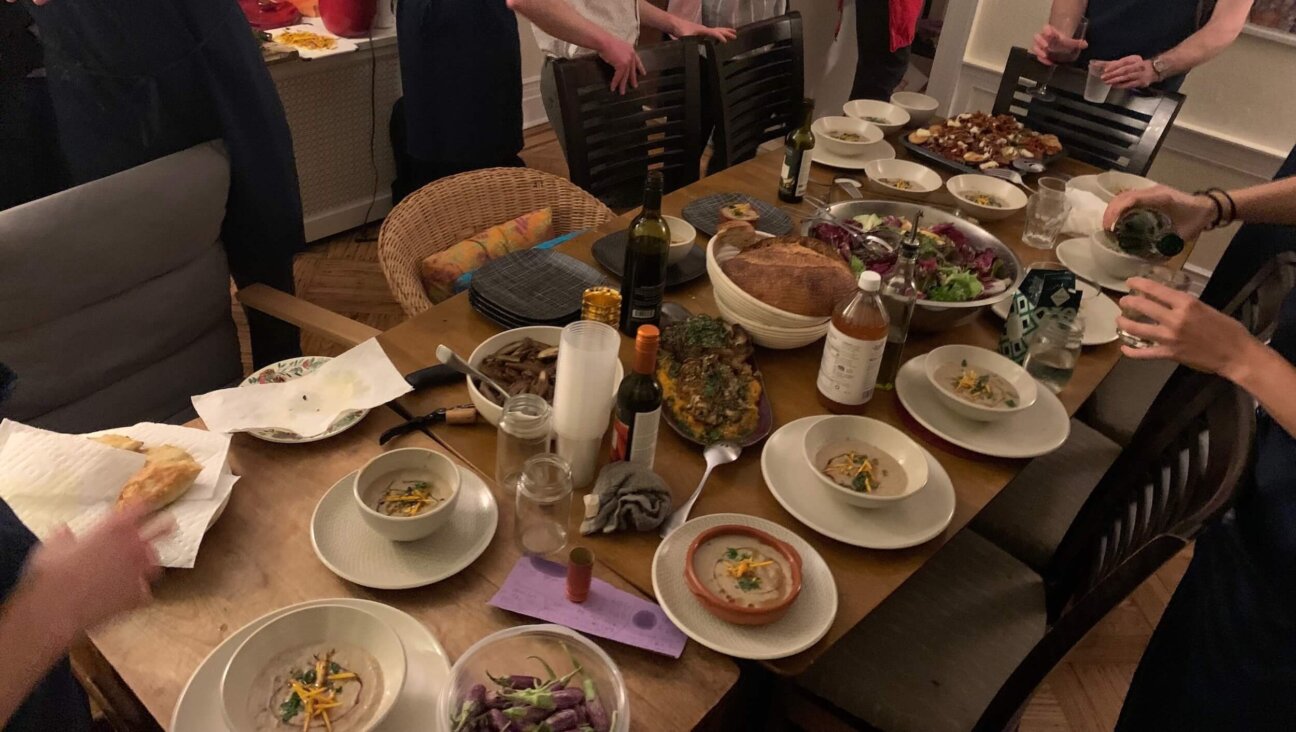Culinary Nationalism: Pride of the Plate
Most New Yorkers I’ve spoken to think Hungarian cooking is the oil-soaked stuffed cabbage served up at every synagogue dinner or worse, the dry kokosh cake (a long yeast-chocolate roulade) old-fashioned New York bakeries so pride themselves on. But good Hungarian food, the kind made lovingly in private kitchens, is completely different, almost unidentifiable to those outside the Hungarian community. Like any country’s food, Hungarian specialties are only “authentic” when they’re done well.
Recently, as my sister and I flipped through a popular cookbook, my eyes froze on a phrase in the introduction, where the author proclaims, with some pride, that they’ve “managed to teach Hungarian mothers to cook…” I read the sentence aloud, and my sister saw red.
“What does she know?” she demanded, “Hungarians have the best food. She just thinks nothing can beat her own.” Clearly, this hit a nerve with us proud Hungarian Jews. Our parents were born and raised in Hungary. We were brought up spending our summers in Budapest. Sure, we speak a language most people have never heard of, but when it comes to the kitchen, there can be no argument.
This feeling seems universal – no matter where you come from. Everyone claims their country’s cuisine is the best. They’re convinced that their grandmother’s soup is the authentic, and that it can never be imitated outside her kitchen. Even within the Jewish community, it seems the variations in our food, more than anything else, is the clear sign of our Diaspora. Jewish food can never be pinned down to one culinary style, since those of us in Central Europe don’t boast the same dishes as Jews in Italy or Morocco.
Some people have criticized Hungarians’ lack of spice variety and our habit of adding paprika to everything. Others have been surprised to fall in love with our cuisine.
Like every kitchen, ours has its share of surprises. The savory dishes are heavy and homey. The sweets are exactly the opposite. Cakes are light and creamy, often based on delicate vanilla, lemon, and rum. There is an entire, almost stuck-up culture surrounding afternoon coffee (never leave your spoon in the cup). And Hungarian tokay wine is underappreciated for its unique characteristics.
Specialties range far beyond Goulash (which for the record is pronounced goo-yash). They include dobos, a vanilla and chocolate pudding cake topped with a layer of hard caramel, meggyes, a sour-cherry pastry, szilvas gomboc (plum dumplings) the list goes on and on.
But I’ll not wax poetic about the magic of my family’s cooking. It will never compare to your mother’s. Or yours. Or yours. If you’ve got an extra seat at the table, I’d be more than happy to give your national dish a try. I’ll be sure to bring some turos gomboc(farmer cheese dumplings) for you to try.
A message from our Publisher & CEO Rachel Fishman Feddersen

I hope you appreciated this article. Before you go, I’d like to ask you to please support the Forward’s award-winning, nonprofit journalism so that we can be prepared for whatever news 2025 brings.
At a time when other newsrooms are closing or cutting back, the Forward has removed its paywall and invested additional resources to report on the ground from Israel and around the U.S. on the impact of the war, rising antisemitism and polarized discourse.
Readers like you make it all possible. Support our work by becoming a Forward Member and connect with our journalism and your community.
— Rachel Fishman Feddersen, Publisher and CEO























